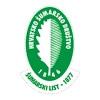
DIGITALNA ARHIVA ŠUMARSKOG LISTA
prilagođeno pretraživanje po punom tekstu
| ŠUMARSKI LIST 11-12/1989 str. 65 <-- 65 --> PDF |
The Influence of the Work Method and the Ecological Management Type of Forest upon the Structure of Work Time and Productivity at Cutting and an Primary Wood Conversion of Firwood Summary The influence of work method and ecological/management type of forest (EMT) upon the structure of work method and productivity has been researched through complex investigations at cutting and primary wood conversion in the forests of Gorski kotar and Lika. The results of the productions methods for the following have been presented: barked long roundwood (multiples) and long pulpwood (Ml); unbarked long roundwood and long pulpwood (M2); barked roundwood assortments and long pulpwood (M3); unbarked roundwood assortments and long pulpwood (M4) — in I-C-10a EMT (Abieti-Fagetum illyriyum Ht.) and I-C-40 EMT (Blechno-Abietum picetosum Ht.). Work time structure and total time for the methods Ml and M3 on one hand, and M2 and M4 on the other, within the same EMT forest, under the approximately same other working conditions, do not differ. Different bucking time values are not a sufficient reason for discriminating Ml, M3 methods, and M2, M4, according to the criteria of work duration and physical exertion of the workers. For the same work methods a considerable influence of the EMT forest has been establiched on the work time needed for the trees of same breast-height diameter. The EMT forest can serve as a criterium for work categorization at preparation and performance of cutting and primary wood conversion. Barking takes 46%, to 51% of netto operating time on a tree, or 31đ/» to 35% of total time. Work productability depends on the EMT forest. In the I-C-10a EMT, the productability of the methods without barking is by lOVo higher — of the ones including barking by 28% — than in the I-C-40 EMT. Key words: cutting and primary wood conversion, work study, work product- ability. |